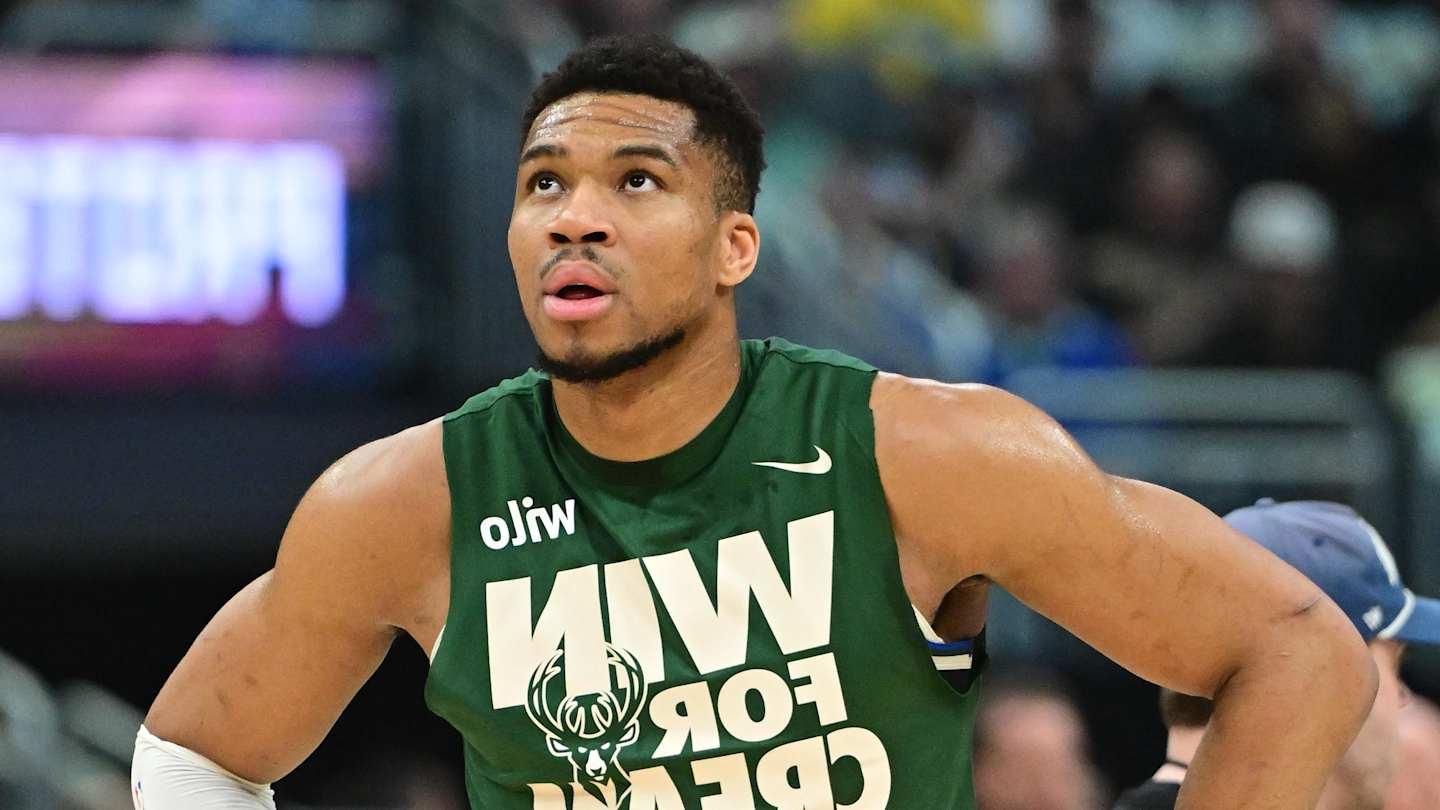T-Mobile Customers Get Free Netflix – Are You Missing Out?
How to Watch Everything for Under $40/Month in 2025
Giannis Antetokounmpo and Trey Hendrickson share a birth week in December 1994, separated by a day and an ocean. Both have risen to prominence in their respective sports, yet their professional lives are worlds apart.
TubiTV Just Hit 200 Million Users – Here’s Why
10 Perfect-Score Shows Buried on Prime Video Right Now
Antetokounmpo, a key player for the Milwaukee Bucks, is tied to his team for three more seasons with an option for a fourth, earning over $54 million annually. However, there are whispers about him considering his future with Milwaukee and whether he might fit better elsewhere long-term. Such scenarios in the NBA usually result in the player either being traded to a more desirable team or pushing for internal changes within the team. Either way, it often leads to the team accommodating his wishes.
Hendrickson, a standout defensive end for the Cincinnati Bengals, has one more year in his contract valued at $15.8 million. After a standout season that put him in contention for the Defensive Player of the Year, he’s seeking a better deal. His request for a trade was denied by the Bengals, and he has publicly expressed frustration about the lack of communication regarding a new contract, even stating he won’t play under the current terms. However, in the NFL, it’s typically harder for players to exert pressure on management compared to the NBA.
While Antetokounmpo is considered one of the top five players globally, Hendrickson does not enjoy a similar status. Yet, the contrast in their situations highlights a significant difference:
The collective bargaining agreement of the NBA seems to favor players, while the NFL’s agreement appears to favor team owners.
This notion has become so ingrained that it’s almost taken as a given among sports fans.
However, this isn’t entirely accurate.
The financial dynamics of both leagues are often oversimplified, which leads to misleading conclusions. This oversimplification stems from outdated views, such as the NFL’s resistance to free agency until the 1990s, and from selective data interpretation that supports preconceived narratives.
It’s true that NBA players generally earn more than NFL players, but this is mainly because NBA teams have significantly fewer players.
An NFL team includes 53 active players and up to 16 practice squad members, totaling 69 players per team. In contrast, an NBA team carries between 14 and 15 players, sometimes even leaving a roster spot vacant temporarily.
This means that at any given time, there are about 2,200 players in the NFL compared to a maximum of 450 in the NBA. This discrepancy is a primary reason why individual NBA players, like Bradley Beal, might earn more than top NFL stars like Patrick Mahomes.
Collectively, NFL players do earn more than their NBA counterparts: NBA teams spent approximately $5.24 billion on salaries this season, whereas NFL teams shelled out about $9.34 billion last fall.
One might argue that the NFL generates significantly more revenue, which is likely why NFL players and their representatives are well aware of this fact.
The NBA’s salary cap is set at 44.74% of “Basketball Related Income” minus projected benefits. The NFL’s cap-setting formula is a bit more complex, but it ensures that “Player Cost Amount” (including benefits) is pegged between 48% and 48.5% of annual revenue.
While the NBA operates under a softer cap allowing teams to spend above the cap figure, the league with the highest payroll in the NBA (the Minnesota Timberwolves at $237 million) would still rank as the lowest in the NFL. When you hear about teams like the Golden State Warriors spending over $400 million on a season’s roster, or the Celtics potentially spending over $500 million next season, remember that this figure includes at least $200 million in luxury taxes, which do not count towards player salaries. These taxes are redistributed to other teams and the league, not to the players.
Delving into a detailed comparison of the collective bargaining agreements (CBAs) of both leagues is a complex task that I will not undertake here. The NBA’s CBA alone is a 560-page document, not including exhibits, while the NFL’s CBA stretches over 434 pages, though it features more lines per page. Even this comparison isn’t straightforward due to the different structures of the documents.
However, it can be safely assumed that the legal teams for both leagues and their respective players’ associations have thoroughly scrutinized these agreements. This thorough examination is evident in the terms of the agreements.
NBA teams are required to spend at least 90% of the cap, whereas NFL teams must spend at least 95%. Both leagues include provisions for stadium and arena deals, highlighting some of the unique aspects of each agreement.
The differences between the two CBAs reflect not just the different strengths of the unions but also the distinct natures of the sports themselves.
A football field presents far more physical dangers than a basketball court, resulting in generally shorter NFL careers and making sustained excellence at most positions much more challenging. NFL owners, therefore, are hesitant to commit to long, guaranteed contracts, preferring the flexibility to transition to younger, potentially more impactful players.
In contrast, elite NBA players often maintain high performance levels over many years and are involved in a significantly higher percentage of plays during games, greatly influencing their team’s success. This leads NBA team owners to approach negotiations differently, often seeking help from the league’s commissioner to prevent them from excessively spending on player salaries. The NBA not only sets maximum salaries but also ties these maximums to the independent evaluation of players by media members who select All-NBA teams.
The priorities of management vary between sports, as do the focuses of the players’ unions. This is one reason why the NFL Players Association (NFLPA) often appears to have less favorable terms: we tend to assess the business aspects of the sport mainly in terms of their impact on the entertainment value, leading us to perceive that players like Antetokounmpo have significant leverage whereas players like Hendrickson have very little. However, the CBA covers numerous other issues that, while not affecting the on-field product as directly, are crucial to the players involved.
NFL Commissioner Roger Goodell has been granted broad authority over player discipline, a power that the union has conceded to him. Although it might seem like a loss for the union, the reality is that since most NFL players never face suspension, this concession does not affect them personally. They are willing to trade this for other benefits that are more important to them and less so to Goodell.
The union also agreed to the implementation of a 17th game in the regular season, which increases the risk of injury for players. However, this decision should be viewed within the broader context of the labor agreement.
The section on “injury grievances” in the NBA’s labor agreement is less than a page long, whereas in the NFL’s agreement, it extends over six pages. The greater physical risks associated with football are reflected throughout the NFL’s labor deal, with detailed provisions on players’ rights to medical care, injury protections, and limits on practices and workouts, because these issues are more significant and require more negotiation in football.
In recent years, both unions have placed a high priority on the welfare of former players, a commendable focus. However, this task is far more daunting and costly in football, given the larger number of former players and the greater health risks they face due to the sport’s physical nature. For instance, the NFL’s CBA includes the “88 Plan,” which provides up to $185,000 annually for former players who have at least three seasons of experience and are diagnosed with conditions like ALS, Parkinson’s, or dementia. There is no equivalent program in the NBA.
While it’s debatable whether the NFL and its union are doing enough for former players, it’s clear that they are doing more than the NBA and its union, simply because the challenges they face are
Similar posts:
- Nets Eyeing Future Move for NBA Star Giannis Antetokounmpo
- Unveiled: The Minimum NBA Salary for 2024-25! How Much Will Players Earn?
- Timberwolves Seal Nine-Figure Deal with Julius Randle!
- Damian Lillard’s Heartwarming $500K NBA Champion Bonus Plan Revealed!
- Bucks Seal $44 Million Deal with Bobby Portis: Contract Extension Details Revealed!

Mike Johnson is a passionate news writer with a keen interest in current events. With over a decade of experience in journalism, he has a talent for uncovering the stories that matter most. Mike’s insightful articles and in-depth analyses have made him a trusted voice in the industry. He thrives on staying ahead of the news curve, providing readers with timely and relevant information. Whether it’s breaking news, politics, or social issues, Mike’s dedication to the craft ensures that his readers are always well-informed.

